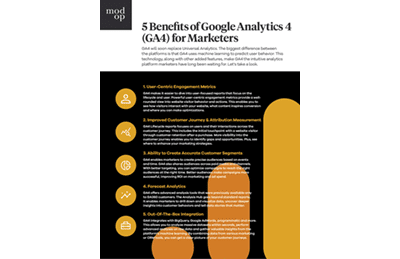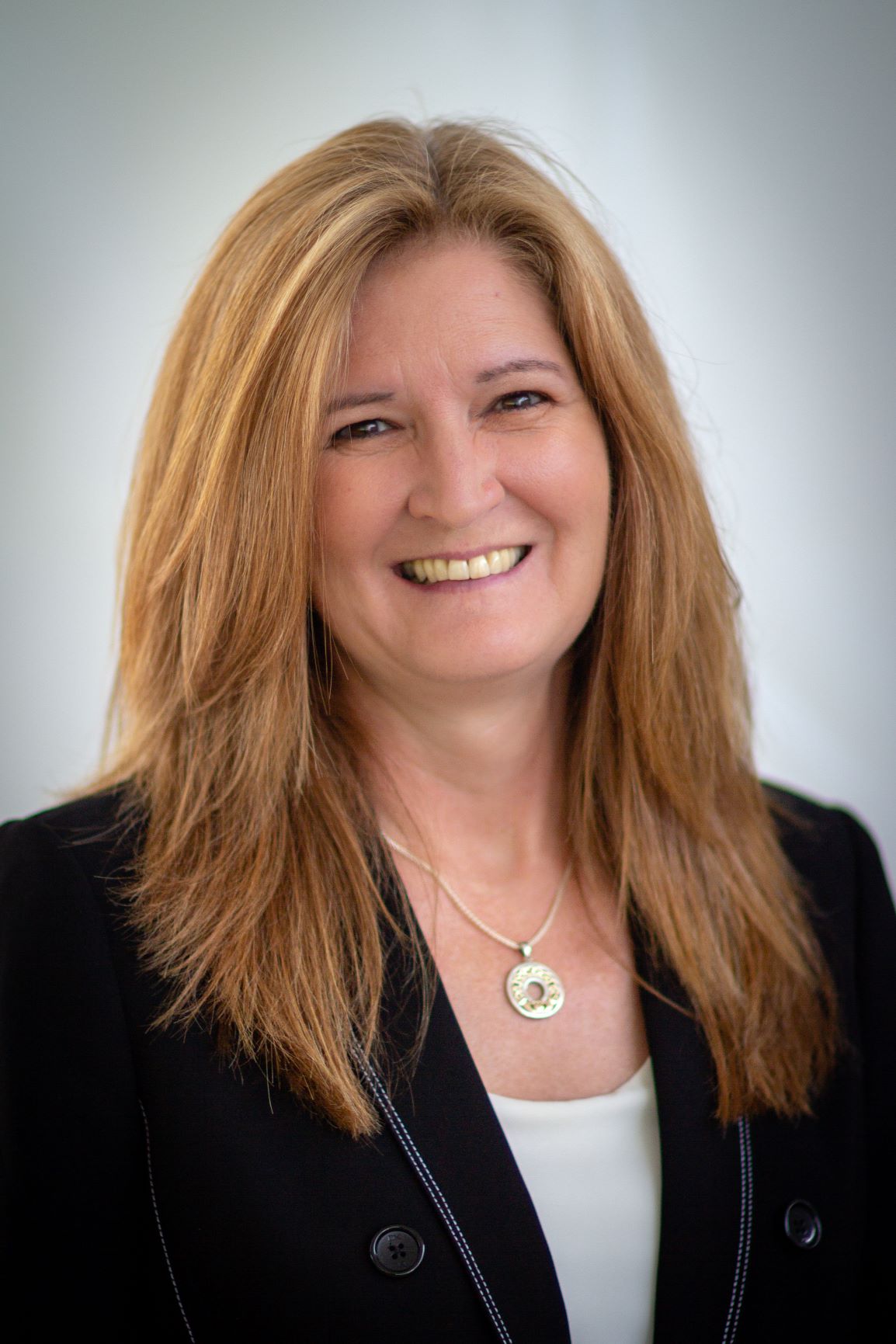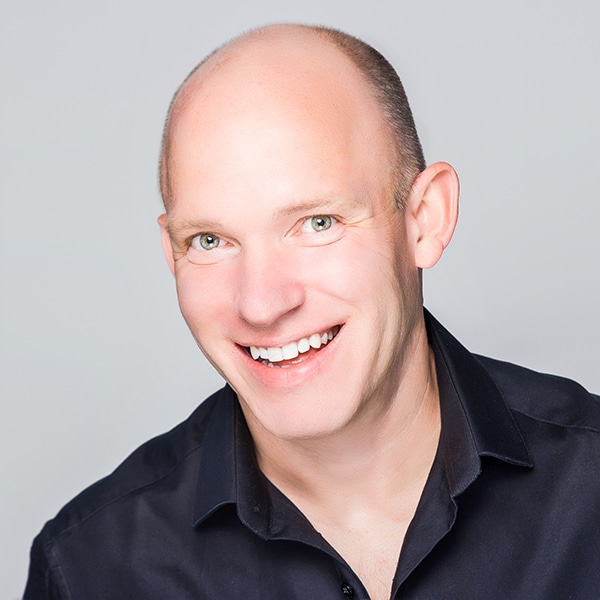Part 2: Shift To The Future With Machine Learning
Murtaza (Matz) Lukmani
Product Lead at Google

Matz Lukmani, Product Lead at Google, joins us once again on the Leader Generation podcast. In Part 2, Matz focuses on Performance Max a new goal-based campaign type that allows marketers to access all of their Google Ads inventory from a single campaign. Powered by machine learning, Performance Max helps marketers drive performance base on specified conversion goals.
In Part 1, he answered common questions from marketers about Google Analytics 4
Tune in to hear how these tools can help marketers improve overall measurement, strategy and performance.
This episode of the Leader Generation Podcast is hosted by Tessa Burg, Chief Technology Officer at Mod Op.
Highlights From This Episode:
- Overview of Performance Max
- 7+ Google properties for paid marketing
- Running paid media campaigns with Google Performance Max
- Automating media management
- Cost-per-click fluctuations
- Testing campaigns in Performance Max
- Making the most of peak seasons
- Data-driven attribution across the customer journey
Watch the Live Recording
Tessa Burg: Hello and welcome to another episode of Leader Generation brought to you by Mod Op. I’m your host, Tessa Burg. And we’re going to start the second part of our conversation with Matz Lukmani from Google. This part of the conversation focuses on Google Performance Max. If you haven’t heard of Google Performance Max, it’s another machine learning powered automation tool. It optimizes across bidding, budgets, audience, creative, and not just for search, but for all of your channels that you’re using within a single Google campaign. So, YouTube, Display, Search, Discover, Gmail, and Maps are all included. So let’s dive in, and learn a little bit more about what it takes to get the most out of Google Performance Max.
Tessa Burg: We’re going to move into the second part of our conversation about Performance Max, and I smile because this was a big adjustment for me. I was an early user of AdWords, and I feel like you get so good at knowing what little levers to pull, and when to make a new. Campaign versus an ad group, and do all these match types, and like all these little levers, and Performance Max kind of like limits those levers, and it’s definitely similar to GA4, a major mental shift. So, tell us a little bit about what feedback have you been giving paid search managers to kind of ditch that old approach, and bring them along to the benefits, and the journey of Performance Max?
Matz Lukmani: Fair. Fair. So, I fully sympathize with you on the idea of being able to control down at a keyword level with 65 little bits, and bobs you could tweak to drive better performance.
Matz Lukmani: To just give you a background like I started, one of the roles I did was managing an analytics team at Mediacom, and this is what we did a lot. Our team would go out and consult our media buying teams on what are the right keywords we are after, what’s our coverage? Can we drive better insights? And even dialing back actually worked at Toys R Us in U.S. where I was managing their web analytics, and a big part of my job was to help with our search marketing managers look at the query data, look at the site performance data, and help them make these manual adjustments that can drive better performance for Toys R Us. This was 10 plus years back, so kind of giving away my age too a little bit. So, it’s a long time back, but things have evolved so much since then, right?
Matz Lukmani: There’s a stat, we don’t use that much, but I think we could. It’s the fact that 15% of our queries are brand new. It’s keywords queries that people are searching for that was not there before. If you just keep extrapolating towards it, and try to manage that manually it’s a lot of extra work. And our advertisers, and our clients always ask us is there an efficient way to automate some of this? And if you go even further for Google, we have seven different venues. So, you can be buying Search, advertising through Google Search, you could be advertising on YouTube, there’s Gmail, there’s GDA which is our display advertising. You can advertise on Maps, Discovery, Shopping, if you’re a retailer, there’s a seven plus properties, and we are reaching around a billion plus users across these properties.
Matz Lukmani: So, the relative value in ROI of a single ad exposure on one of these properties can be drastically different on a real time basis for an advertiser. Trying to manage this manually can be really daunting, and this changes when you’re looking at cross channel mix, and then add the layer of real time bidding on it.
Matz Lukmani: The idea with Performance Max is simply to make it a little bit easier, and essentially answer what our clients have been asking us a simpler way to buy advertising with Google across all our surfaces or our inventory types. So, I agree with you, it takes away some controls but the idea is it gives you back control where it really matters.
Matz Lukmani: So, trying to go a little deeper on audiences you can build or audiences you can enrich as post party data for your campaigns are looking at assets, looking at creative excellence. You start spending more time towards these tasks which are actually incremental versus spending a lot of time on manual things which were helping, but they were limiting you from doing much bigger better thing.
Matz Lukmani: Also we are at a time where there’s a lot of economic uncertainties. Companies are looking to cut costs, and sharpen their focus as much as possible, and this is perfect. A product like this should help you take away some of your time that’s done for manual work, and actually do something more creative that adds to the bottom line even further. So, I’m hoping it’s going in that spirit of improving performance with time.
Tessa Burg: Yeah, no I think that’s a massive benefit at machine learning, is that it gives you that space to do the important work of creativity and strategy. And then you also hit on something in both our conversation about GA4 and Performance Max. It is helping marketers, and helping executives stop looking at people in isolation.
Tessa Burg: So as humans, we can only comprehend like what am I seeing in paid search, and what adjustments am I making here? And we hear a lot, especially in B2B marketing, I only want to generate leads, I only want to focus at bottom of the funnel. And so they stack tactics there, and then try and optimize them right at only at the bottom of the funnel. And what GA4 is giving you, that whole customer journey, and Performance Max looking at easier to manage across all of your tools, all of your ways of reaching the the customer. It’s really that recognition that customers are not just on one device, they’re not just in one place. They are researching and interacting with your brand and new product across many channels, and across a lot of time. So, I feel like that’s really going to help savvy marketers who are struggling with that conversation of like, well, if we cut out the YouTube advertising, I don’t know how we’re going to generate discovery. Like sometimes we’re like we got to just do this one thing. It’s this recognition, and machine learning helps us get there faster, because it takes all of that into account which you we as humans just we can’t do.
Matz Lukmani: All right, yeah, I mean I want to surface one thing that Performance Max is still new. We are not in beta anymore, it’s been out for a year. So, it’s a life product but the plan again is very similar to what we have at GA4. It’s not to replace what you’re doing, but to augment what you’re doing with the new Performance Max campaign. It’s there’s a lot of gaps in how we are manually managing even if you’re automating maybe buying for Search Display, et cetera, there’s a lot of gaps between these media touchpoints or venues. And the idea with performance fact at least this year, and for a majority of next year is to fill that gap. So, it’s a complement to what you’re doing manually, and not a replacement for your Search, Display, Video campaigns. You still need to do run them, and we are not at a point where you can stop running them. So, if you stop running them you’ll have a negative impact. So, please don’t do that. The idea is to supplement them with Performance Max, and hopefully free up some of your time to do more creative, more strategic work.
Tessa Burg: Yeah, no I love that. So, one thing we have noticed just in general though is that it looks like CPCs are going up a little, so there’s some better performance, but the cost is a little higher. Tell me a little bit about, well, one, are we doing something wrong, or why are we seeing that trend, and is there like a ramp up time that the algorithm behind Performance Max is getting smarter or better?
Matz Lukmani: Yeah, so it’s a good way you phrase it. You’re looking at CPCs, and you really have a target in mind, or you have an idea of what you want to hit. With Performance Max I think the critical switches, we want people to focus on their marketing objectives, and what they want to drive through the funnel. So if it’s conversions, optimize conversions within some guardrails of budget or CPA targets. If it’s a value then you know you want to optimize conversion value for your business, and then CPA is basically kind of an input towards getting there.
Matz Lukmani: Yeah, you might see some turbulence from time to time, but there’s a lot that can impact a CPC fluctuation. It could range anything from stuff you can control in an account to even things that are happening at an economic level and the option level for a search query. So, there’s stuff in your control, stuff outside your control. There is some turbulence.
Matz Lukmani: The key element again with Performance Max is when you turn it on, and you start using it, it has a bit of a learning period. So, you should expect some learning period before which campaigns normalize, and standardize and once it starts hitting your targets there is a good chance it’ll start beating those targets. Your performance targets, which are either conversions or conversion values.
Matz Lukmani: What we’ve seen is advertisers that tend to start using Performance Max to add a layer on top of their regular Search, Shopping YouTube campaigns is that paid drive 13% more conversions at the same cost. And that’s the critical element. Over time it should become cheaper for you to drive more conversions because your objective is conversions. And then when you start improving your assets, you might check your asset quality reports, and asset insights or tweaking the right look back windows. You can even drive even better performance beyond that, 13% average that we see.
Matz Lukmani: A few other things you want to keep in mind is volume of traffic, it might have an impact on how quickly your algorithms learn. So, if you, they say test big in a small market versus test small in a big market, volume really helps. If you can test on a bigger volume, your learning is quicker. And finding that right balance I think is the end element. I would say if you test once that’s great, and you got good results, you want to keep running these Performance Max campaign ramping them, that’s great, but don’t lose heart if you test once, and you don’t see a good result. Try to retest because it’ll take a couple of tests for some advertisers to see the full impact, and then they’ll get to a happy medium. Ideally this works for you, and if you still struggle, and that’s when I think it’s critical for you to involve your account team, so they can help you diagnose the problem, and give you some good recommendations. Because there’s a lot happening in the ecosystem that will have an impact on all campaigns including Performance Max in your mix.
Tessa Burg: Yeah, I think that’s an important point that the ecosystem is always changing. I know I worked at American Greetings, and our business was extremely seasonal, like almost every month we had a holiday we were ramping up for. How does Performance Max take that into account because we wouldn’t have very long to test, like when it’s Mother’s Day like we we’re on, we have to do it, and I know other businesses not just cards and holidays also have seasonality to them. What’s your recommendation there?
Matz Lukmani: Yeah, so peak is pretty critical. Peak might be different for different industries. So, like you mentioned, Mother’s Day, very big peak for certain businesses, for retail we are getting into the big peak seasons for a lot of our advertisers. There’s a live stream we did, it’s almost an hour and a half long. So, I can share the link with you. It would be lovely for the listeners to get through it. It kind of talks about what Performance Max is, and how it’s becoming the future of Google Ads advertising. I highly recommend, please check it out, because it’ll give you a lot more details than I can maybe share in a podcast.
Matz Lukmani: But overall peak planning, pretty critical, work with your account teams they can give you very local advice on what to do to make the most of your peak seasons. Some cheat codes I can maybe give on this podcast, maybe breaking them into three buckets.
Matz Lukmani: The first one is you have a peak promotion, and there’s probably list of products that are categorized as your peak products. Things that you will sell or upsell during a short period of time. One advice I would say is create a separate campaign if you can for your peak PMAX products. Put them in a single PMAX campaign which is targeted towards peak promotions. Run them side by side to your regular campaign, so you don’t have an impact, or any impact on your regular day to day business.
Matz Lukmani: Then we have something called custom labels. Those are very cool because you can add them on products which are specifically for your peak, and then you can structure your promotions accordingly, aka use things like listing groups for example. If you’re in sensitive category, I think that gets more tricky. So, there is in this policy reviews that needs to take on any new assets that go live, any new product categories. So, try and keep that in mind with your timing. So, plan early as fast as possible.
Matz Lukmani: And then the lfast last bit I would say is asset groups. That that is really the nucleus of what Performance Max campaigns are. They take some time to ramp up. So, what I would suggest you could do is set up a standard asset group earlier with those products you want to use for your peak planning or peak promotions. Run them for a couple of hours in parallel, and then just exclude them from sale products from your standard campaigns. This will build some history, and then also avoid any overlap of the same camp products being visible too early. And then when the timing is right, you can start running these campaigns on with some historical data build.
Matz Lukmani: That’s all the bits you can do within peak products, management of your campaigns. There are other things you can do like budgets, and bidding for example. Campaigns generally take some time to stabilize. So, start early, early as possible, try to not make too many changes within the same day because it doesn’t help bidding to relearn. Keep in mind there’s a conversion delay between users seeing your ad and converting. So, tend to make changes of two targets with at least one or two conversion cycles as I would say an average.
Matz Lukmani: And then there are other things you can use seasonal adjustments when you have very short burst changes in your overall conversion rate. So let’s say for a temporary within seven days from the time you want to make this change, if you expect your conversion rates to change by let’s say more than 30%, you can adjust your budgets, and TOS for that period manually, or you can also use things like seasonal adjustments to let the spot bidding go no that things are going to change a little bit for a short duration of time. This is very, very useful during days like Black Friday when things change drastically, and the algorithm meets to learn and learn, but.
Tessa Burg: Yeah I feel like that’s a lot of awesome tools for retailers, and people whose businesses are very focused on peak. I mean that covers a ton of retailers, and even a lot of B2B businesses have their own peak seasons. So those are great tools. One question that we get a lot is ROI. Like how can I tell which of these activities, so we know Google Analytics four, and Performance Max is really giving us higher quality, more access and visibility into the connection among all of our marketing tactics, but how does this machine learning enabled platforms give us more accurate attribution, and measurement, and help us I guess more accurately answer that ROI question?
Matz Lukmani: Yeah, I love it when things get into attribution because that’s when you know you’ve solved the foundation now you’re going beyond just the single touch point, and trying to optimize more cross channel, more cross engagement types. So, personally this is where I feel like the intersection of attribution, and automation is really where PMAX does the best job.
Matz Lukmani: To take a step back, at Google we’ve launched something called a data-driven attribution model. It’s our flagship attribution model versus something you can use which is fairly, I would say rules driven like a last click model where you get full credit to the last touchpoint or a first select model where you get full credit to the first touchpoint.
Matz Lukmani: Now what we’ve learned over time is the data-driven model that we’ve launched a few years back now, it does much better than any of these arbitrary rule based models. And why it does so is because we’ve been investing heavily on the model itself.
Matz Lukmani: To give a very simple example versus just an arbitrary rule, the data-driven model looks at all the touch points of the user journey and tries and figures, and compares all of your converting, and non-converting paths, and tries and figures out which touchpoint drives incremental value towards driving conversions in your account.
Matz Lukmani: So, if there are a touch points which lead to better conversion rates because we keep seeing that in your account that’s happening with the users, we start giving those touch points more credit versus those touchpoints whose presence does not lead to better conversions in your account at a user path level. We’ve been improving on that model. So, in the last few years we’ve started looking at things like time to conversion modeling to figure out if the timing of these clicks matter.
Matz Lukmani: So, say you saw the same user journey, but if you saw that in one day conversion rates are better versus seeing that same journey for your users over three days. So, we try to factor the of time. We’ve expanded, we started even factoring things like ad features. So, exposure to a a click versus an EDC, which is a engaged view of a YouTube ad. So, figuring out if those different feature types are having an impact on your overall conversion rates. And then the final element is incrementality.
Matz Lukmani: We look at if a touchpoint tries incremental conversions in your account versus at a macro level. Any ads that we are holding back like a ghost ad. So, we know specifically if your ad exposure led to incremental conversions in your account. Our recommendation always is, this is a setting in Google ads, so when you go in Google Ads account, it’s a one of the conversion settings which you can switch from a last flick to a DDA model. And based on all the feedback we’ve heard from our clients over the year, we’ve said Google keeps telling data-driven attribution is really good, you should be using it, but it’s still the default in your conversions account.
Matz Lukmani: We’ve actually started making DDA, data-driven attribution, the new default in settings of the accounts. What we see is it improves performance, and at this point in time we have more automated bit strategies, so more conversions that are used for automated bit strategies using a data-driven attribution model versus the old standard, which was the last click model. And that’s where we see better improvements as well. On an average we see when an advertiser goes from a last like model to a data-driven model, they drive 6% more conversions at the same cost across Search, Display and YouTube.
Matz Lukmani: So, the attribution is solved with the DDA model, and when you mix that with Performance Max, you see the full user journey, you can look at all the touch points across all the individual channels, and if you are setting as data-driven, you’re giving the right conversion credit to all the touch points, and Performance Max then can optimize towards the right touch points as well.
Tessa Burg: I think that’s amazing. I feel like some people might be thinking, so you’re saying there’s no silver bullet, like we can’t just do this one thing over here, and use Performance Max for this reason and it works. But the good thing is it’s the machine learning, and the connections that you’ve made that takes the manual work out of having to decide. Like if we have this data-driven attribution, and you see that it’s improving performance, then again it’s all about creativity, your strategy, what are you putting into this very powerful engine?
Tessa Burg: So, Matz, I know you’ve only been at Performance Max for a little bit, but what are you, I mean I’m pumped this conversation has me excited. What are you most excited about looking into the future?
Matz Lukmani: Yeah, I’m pretty excited to work on Performance Max. I’ve been working on it for just a month, or just around a month now. So, I think I have to spend a lot of time on it. On the contrary, I’ve worked on analytics for eight years, so I just spent too much time there. A lot of knowledge there, and that made me respect what we are doing with Performance Max even further.
Matz Lukmani: I think the first thing which I love is that it’s an opportunity for teams to come together. We’ve always, even within marketing teams, you have a display media team, you have a search team, you have a social team, but their objective is the same. They’re driving the same conversion for their business. And a strategy that worked for Display actually can be translated into Search, can be translated into social, and with the idea that now you’re buying across all the silos of Google Media in a single bundle it’s an opportunity for organizational silos to break, and people to come together.
Matz Lukmani: So I love the idea of working on a product that’s bringing people together. And I also love the fact that it’s fully powered by AI in the background. This is probably the most cutting-edge thing we’ve put out there in terms of ads automation this year. So excited to be part of that evolution as well.
Tessa Burg: That is really exciting. It’s a very powerful tool. If people wanted to reach out to you, ask questions, how could they get in touch with you after listening to this podcast?
Matz Lukmani: Cool, so first of all, if you’ve reached to the end of this podcast, thank you for listening through. So, love that. If you want more, please find me on LinkedIn. I’m on LinkedIn so you can always pin me, and I would love to have a conversation, love a nice conversation. And then secondly, I would actually just mention, we have a very hard working, and awesome Google account teams out there. So, if you have an account manager, whether they help you with Google ads or analytics or you have a partner that you work with, an agency that’s trained by Google on Google products, please reach out to them. They’ll know so much about your business, and they’re trained by Google folks as well. So, they know our products very well. Work with them to improve your performance. They would love to hear more, and personally, yeah, please find me on LinkedIn. I’m right there. I’d be happy to have a chat.
Tessa Burg: Well thank you, Matz, so much for being our guest today, and for all the listeners that made it to the end, you can hear more Leader Generation podcast by visiting our LinkedIn showcase page, just search Leader Generation. You can find me on LinkedIn, it’s Tessa-Burg or Visit Mod Op. So best of luck to everyone who’s getting ready to make this big transition. Feel free to reach out if you need help, and we will talk to you later. Thank you Matz.
Matz Lukmani: Thank you.
Murtaza (Matz) Lukmani
Product Lead at Google

Matz Lukmani (EMEA Product Lead, Performance Max & Attribution) based in London (UK) has been with google for +7 years working on products like Google Analytics 360, Google Ads, Search Ads 360 and Firebase Analytics. He currently leads Performance Max Campaigns and Attribution offerings within Google Ads, Search Ads 360 and Google Analytics in EMEA.
Watch the training video Matz talks about during this episode: Performance Max and the Future of Google Ads
GA4 Information Sheet



